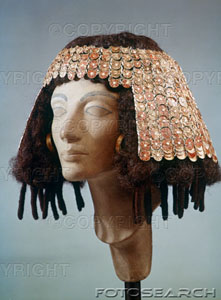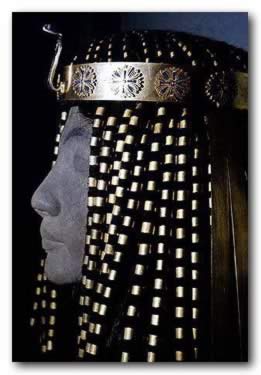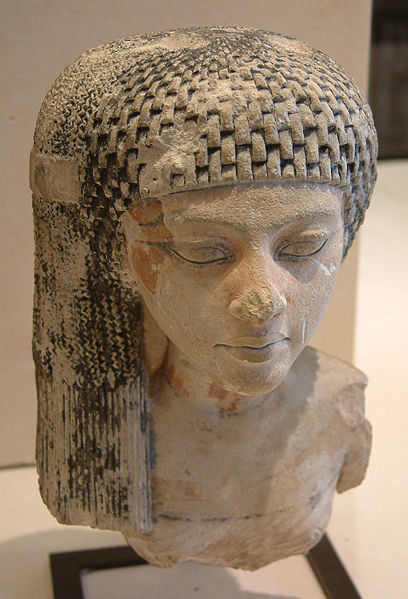
Head-dresses and wigs of different types were often worn in Ancient Egypt, but we are going to focus on the hairstyles. Hair care was an intricate part of grooming in Egypt, and much time was devoted to styling it. Setting lotions were used, made of bee’s wax and resin. Women plaited or braided their hair, or wore it in ringlets. When hair was worn short, it was cut in the severe crop that is the epitome of Egyptian style. Artificial hair extensions were sometimes added to the natural hair.

Liz Taylor as Cleoptra
Married women wore their hair with shoulder-length locks framing the face, while the rest of the hair fell behind on the back. Another possibility for married women was the enveloping wig, where the hair fell evenly all around the head at the shoulders. Cleopatra often wore her hair in plaits, with a ribbon around her temples. Unmarried women and young servant girls sometimes wore a hairstyle that fell just below the shoulders, with ringlets to either side of the face.


An actual wig from an Egyptian mummy - braided with gold beads.

Intricately woven, crimped, and braided hairstyle.





